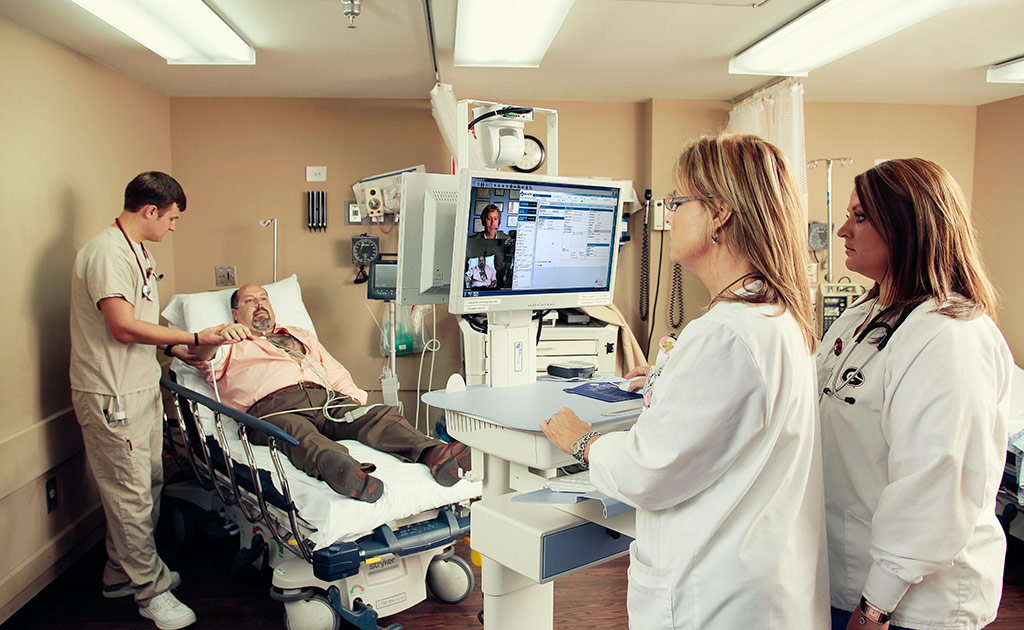Stroke remains a leading cause of death around the world; striking unexpectedly when the blood supply to an area of the brain is suddenly cut off. Once a stroke begins, brain cells are lost by the minute and the timing of emergency treatment is critical. Quick treatment can reduce complications, minimize long-term effects, and may be a patients’ only chance of survival.
Telemedicine can play a life-saving role in stroke care
By implementing interoperable healthcare technologies, all medical providers that come into contact with someone suffering a stroke can quickly communicate and execute emergency care when time is of the utmost essence. By leveraging real-time, multi-party video collaboration, first responders can quickly connect with a neurologist or stroke specialist for a video-based stroke assessment. In doing so, they jumpstart the path of care before the patient arrives at the hospital or even transport the patient to a different facility better equipped for the necessary treatment.
A great example of this at work is Vidyo’s collaboration with Massachusetts General Hospital (MGH) on the Partners Healthcare Telestroke Program, which has been supporting dozens of hospitals throughout Massachusetts, New Hampshire and Maine since 2011. Doctors at MGH were looking to address the need for improved stroke care at the immediate presentation of symptoms, and required a telemedicine solution that delivered very specific features and benefits.
The request was straightforward but nonetheless demanding. MGH needed the solution to be interoperable with installed video conferencing systems at hospitals in and out of the MGH corporate network, and adaptable to varied environments while requiring little to no technical help to deploy, use and maintain. The video also needed to be the absolute highest-quality, even over low latency and mobile networks. The video connection and communications needed to be clear and accurate to ensure the best path of care for the patient at risk. Vidyo’s solutions made all of this possible for MGH doctors and patients alike.
Beyond just stroke care, a telehealth or telemedicine approach has indisputable benefits for patients, caregivers and healthcare delivery organizations (HDOs) alike. When video is integrated into interoperable workflows, it has the power to improve patient outcomes while reducing the costs of care delivery and generating ROI across the continuum of care. This includes:
- Increased reach to providers, specialists and clinicians by leveraging resources from a central, virtualized hub
- Improved efficiency of services and assets across hospitals and health care systems
- Accelerated time to care delivery and treatment, with a clear path of transfer
EHR integration is a must
To leverage telehealth and telestroke care in an impactful way, providers need a tight integration with hospital EHRs (electronic health records). In order to make the most of telehealth initiatives, anyone involved in a patient’s care journey should be allowed broad access to their records and medical communications. Traditionally, a lot of roadblocks inhibit the exchange of patient information between healthcare organizations and clinicians, but as our ability to effectively treat patients from afar improves so does our need to have everyone in the care journey provided access to the critical details.
Want to learn more?
It’s official, telehealth has hit the mainstream, and recent stats from a Vidyo survey are pointing to 2018 as the year telemedicine becomes medicine. You can read more about it in our complimentary eBook – 2018 Trends in Telemedicine.
Plus, you’re invited to visit Vidyo at the 2018 HIMSS Interoperability Showcase at Booth #26 (Level 1, Hall G) from March 5-9. Here I’ll be leading connected demonstrations on how telehealth is improving stroke care, specifically in rural and underserved areas.
Along with Epic, ViTel Net and other quality providers, we’ll follow a patient with significant risk factors for stroke through prevention, diagnosis, timely treatment and home care to demonstrate the significance of telestroke. #HIMSS18
